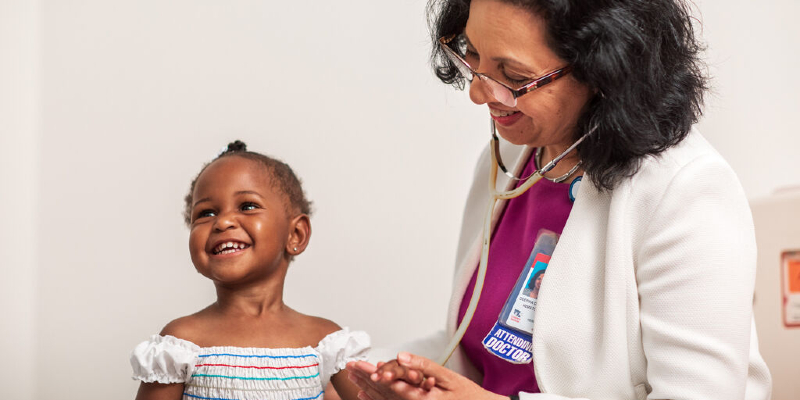Treatment
Pediatric Cellular Therapy Treatment
Cellular therapy uses the body’s own immune system to fight cancer and infections. Children who undergo stem cell or bone marrow transplants are at risk for graft-versus-host disease (GvHD). The newly transplanted cells regard the child’s body as foreign and begin to attack it. Cellular therapy, an innovative treatment in the clinical trials phase, trains the body’s own cells to fight the infection.
Children’s National Hospital has a specialized research team dedicated exclusively to cellular therapy, working in an advanced, sophisticated cGMP facility. That means it adheres strictly to FDA-enforced regulations that ensure the safety of medications.
Cellular Therapy: How It Works
Our expert cellular therapy team takes T-cells from the donor or patient and “trains” them in the lab to fight specific viruses and/or cancer cells. We then infuse the patients with these newly trained cells. We may recommend this treatment for children who are at high risk for specific viral infections, because the “trained” cells can fight infections more efficiently.
We are also beginning a similar program for patients with high-risk leukemia. Approximately 25% of patients who undergo a bone marrow transplant to treat leukemia will have a relapse. We are working to prevent these relapses through cellular therapy. We manufacture donor cells in a lab to fight the patient’s leukemia and then inject them into patients after their transplant. Our hope is that this therapy will decrease the risk of relapse and improve survival rates.
Cellular Therapy: What to Expect
We will first need to determine if your child is a candidate for cellular therapy. If he or she is, we will discuss with you in detail the procedure and recovery. In general, this is what you can expect:
- We take donor cells and manufacture them in the lab to fight specific viruses and/or cancer.
- Then we inject the cells into the patient after the transplant.
- Patients (usually those at high risk for certain viral infections) now have the tools to fight the infections and can lower their risk for getting sick.
- The cells are given to the patients in the outpatient clinic, in a procedure that takes less than five minutes. We usually give the patient premedication with Tylenol and Benadryl before the cell infusion.
- After the infusion, we will monitor the patient for an hour before discharge.
- The T-cells usually “take” within two-six weeks after which time the patient may no longer need other medications to treat or prevent infection.
While we have not seen significant side effects with this treatment, patients should watch for some potential side effects in the first six weeks after the cell infusion. These may include:
- Fevers
- Lymph node swelling
- Cough
- Shortness of breath
- Wheeze
- Rash

Bone Marrow Transplant at Children's National Hospital
The Blood and Marrow Transplantation team is a nationally recognized leader in pediatric blood and marrow treatment advances and cutting-edge treatment protocols developed by physicians right here at Children’s National. Discover more about the treatments we offer.

 Aasha's Rare Gift Will Help Other Babies Grow up Healthy
Aasha's Rare Gift Will Help Other Babies Grow up HealthyTesting the descrption field
Departments that Offer Cellular Therapy Treatment

Blood and Marrow Transplant
Our blood and bone marrow disease experts provide advanced transplant procedures for children and teenagers.




